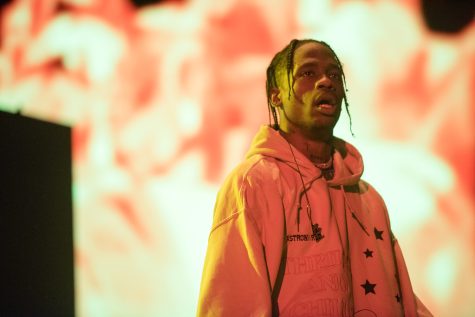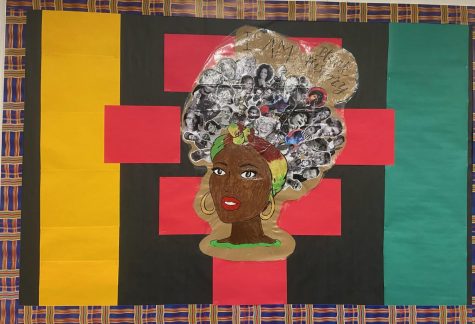The Kpop craze: Korean entertainment makes its way into mainstream America
Kpop is quickly becoming a genre of music that every American household is familiar with and adores. Before the success of superstars like “Big Bang” and “Twice” in the Kpop industry, several artists paved the way for contemporary Kpop’s unique style with their contributions to the art form. Seo Taiji and the boys are an underrated group from the 90’s who made a big impact on the modern style.
They blended rap with eastern stylings to create a unique sound which has become the foundation of today’s sound .Many people also don’t realize that the genre can be traced back to the 1920’s with the release of Yi Pungjin Sewol in 1925 by Park Chae-seon. After the Korean Peninsula was partitioned into North and South following its liberation in 1945 from Japanese occupation, Western culture was introduced into South Korea on a small scale.
By the 1960s, the economy was flourishing and technological advances made music far more accessible. Pioneers of Kpop include The Kim Sisters who performed on the Ed Sullivan Show more than 22 times. 50 years later Gangnam style became the first video to gain a billion views, which helped Kpop make waves in American pop culture. In 2017 BTS won Top social artists at the Billboard music awards while competing against superstars like Selena Gomez and Justin Bieber.
The infatuation with Korean entertainment may be due to the fact that people enjoy synchronization and visually appealing aesthetics and all of the artists perform well live because of intense vocal training and preparation. Fans recognize their professionalism and appreciate their dedication to the art form. Some songs include English lyrics fans which causes fans to become intrigued about the language and about the culture surrounding the music.
“It seems like Korea puts a big effort into making KPOP stars international which also helps, senior David Park said The energy KPOP delivers to the Americas is one of the biggest reasons as to why it’s so popular.”
Most groups are put together by large entertainment companies and can have 4-21 members. BTS for example is owned by Big hit. There is also cube, starship, YG, FNC, and S.M. and these corporations work extremely hard to tap into a transinternational market. Stylists,producers, choreographers and marketing teams coming together to produce fresh faced cash cows with extremely calculated careers. At a very young age they audition and begin training for about two to five years each member usually has an individual role like rapping and lead vocals which makes the group appear to be a cohesive combination of talent.
“I became a fan of Kpop about a one year ago, I feel like kpop artists are extremely talented and it doesn’t hurt that they are good looking, senior Kyla McCabe said.
Plus they feel relatable because they communicate with their fan bases through social media. I think that there is so much variety and music is a universal language so it speaks to everyone even though it’s not all in english”,
According to asian entrepreneur, it is an industry that jumped to a worth of over billions of dollars in less than a few decades. According to BBC, global sales were worth over $30m in 2009. Some credit can be given to the well directed and acted K-dramas which have contributed to constant interest in Korean entertainment. Several Korean idols have made appearances in these television programs such as Jung Eun Ji from apink who starred in The winter wind blows and Lye Hye Ri from Girls Day . Along with being style icons and well rounded performers Kpop idols have also influenced beauty forms. Due to pressure from entertainment companies some singers become promoters of plastic surgery after several alterations to their appearance.
This is one of many concerns mentioned in regards to the criticisms of this industry. Many reports have surfaced on the internet about the mistreatment of kpop idols by the companies who manage them. In 2009, BBC reported that Dong Bang Shin Ki took its management company to court, on the grounds that their 13-year-contract was too long, too restrictive, and gave them almost none of the profits from their success.
Its possible to argue that considering how CD’s are no longer in use and some streaming sites have music that is extremely underpriced, it is hard to share a profit that is barely there. All of the revenue which is produced from ticket sales and merchandise is given back to the corporations who fund the acts. But this does not excuse some of the claims made about these “Slave contracts”.
The suicide of Kim Jong Hyun has sparked a growing interest in the mental health of these celebrities and has caused us to question our own entertainment industry and understand that everything that glitters isn’t gold. According to the guardian in a note made public a day after his death, the 27-year-old had said he felt “broken from inside”, highlighting the pressures facing young people in South Korea’s competitive entertainment industry. If a band member wants to leave early, they have to pay the company a fee based on projected profits for the remainder of the contract.
“With the fast diffusion of different cultures through the Internet, it is now so easy to obtain music from anywhere. Part of the popularity is a massive amount of marketing done by Korean business. The other part is that the music and shows are appealing to people regardless of nationality,” Human Geo teacher Jeanne Shin Cooper said.








